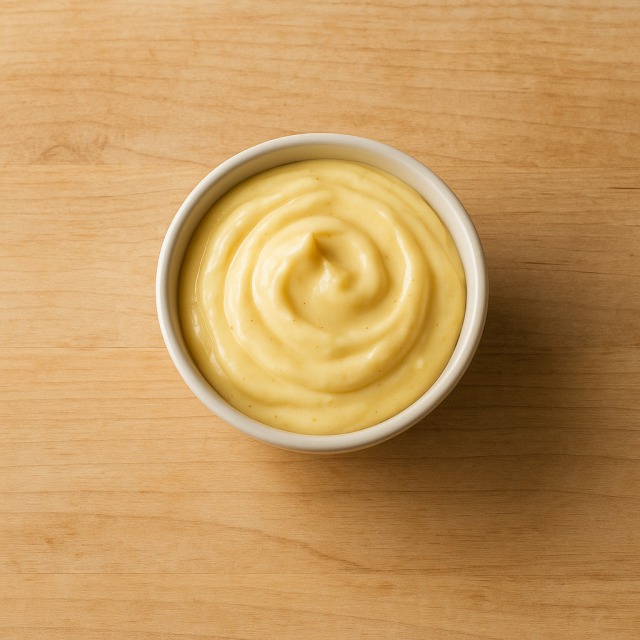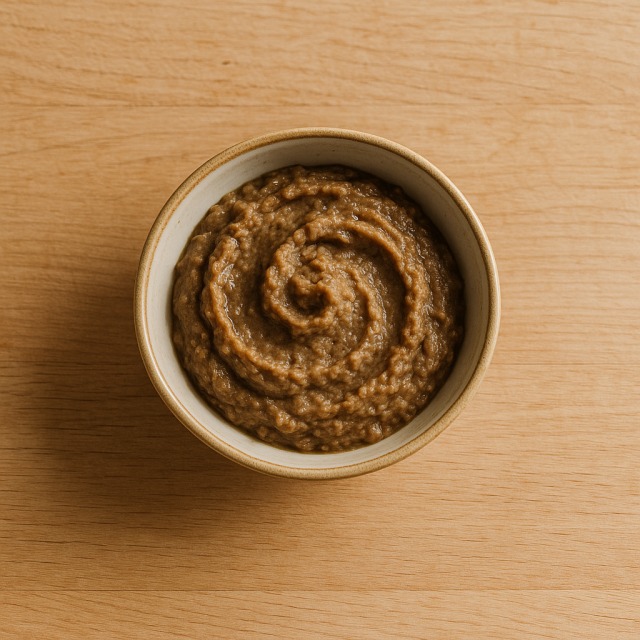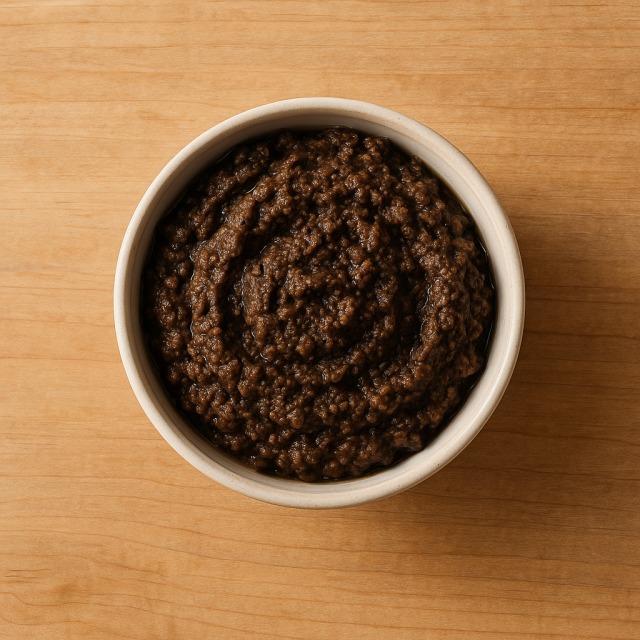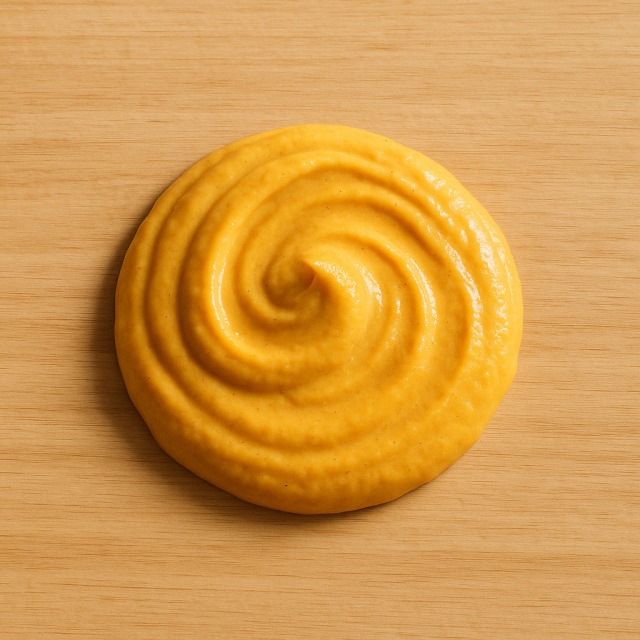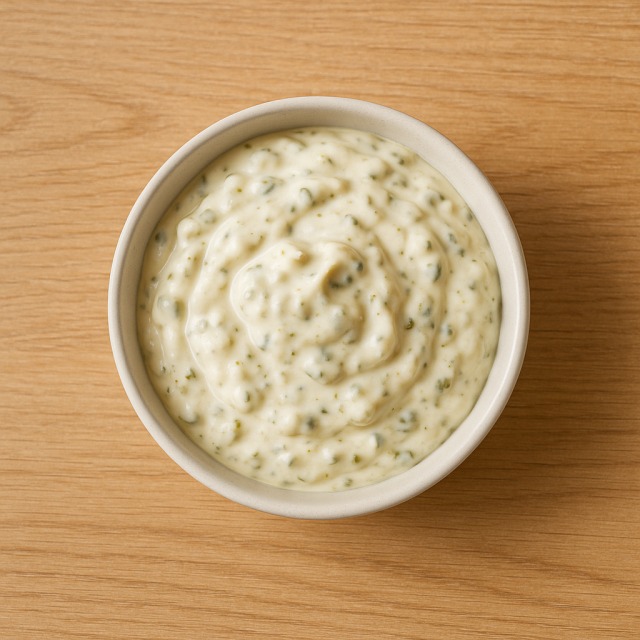Calorie Chart / Seasoning & Sauces / Tzatziki
How Many Calories Are in Tzatziki?
Calculation of the nutritional value & Recommended Dietary Intake of tzatziki
For g and a calorie requirement of kcal
| Calories 52 kcal | Proteins 0.5 g | Lipids 5.4 g | Carbohydrates 0.3 g |
| 3% | 1% | 8% | 0% |
Health benefits of tzatziki
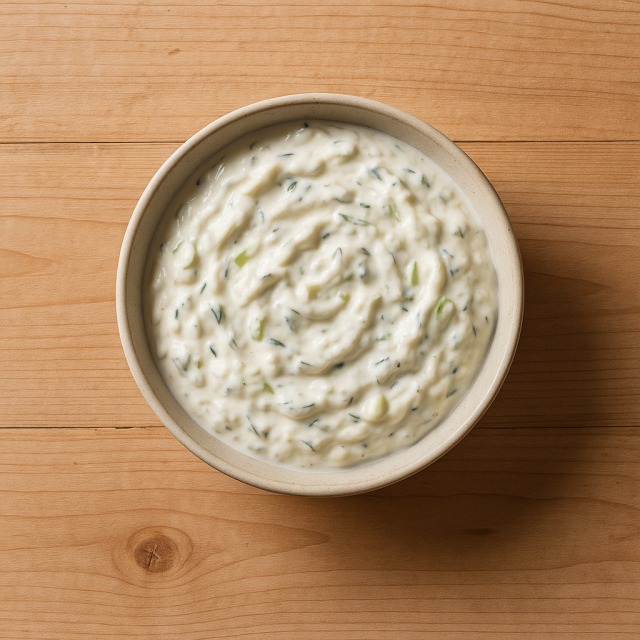
Tzatziki - 100g
Calories 344 kcal
Proteins 3 g
Lipids 36 g
Carbohydrates 2 g
Although tzatziki is perceived as a light Mediterranean dip, its traditional recipe (Greek yogurt, cucumber, olive oil, and garlic) brings around 344 calories per 100 g, which classifies it as a high-calorie condiment compared with plain yogurt or fresh cucumber. The bulk of these calories comes from the lipid fraction (mainly monounsaturated fats from olive oil), while proteins remain modest (about 3 g) and carbohydrates very low.
Beyond calories, tzatziki supplies valuable nutrients: calcium and phosphorus from strained yogurt support bone health; vitamin K from cucumber contributes to blood clotting; and extra-virgin olive oil provides polyphenols with supposed antioxidant effects ("supposed" because human evidence is still limited). Live cultures naturally present in fermented yogurt may foster gut microbiota balance.
Historically, tzatziki is rooted in the Ottoman "cacık" and spread throughout the Balkans; its name derives from the Turkish pronunciation of the Persian "zhazh." Knowing this background can help understand why each region tweaks fat content—and therefore calories—by using sheep's, cow's, or even goat's milk yogurts.
Tips for incorporating tzatziki into a balanced diet
Because of its relatively high calorie density, consider tzatziki as you would a rich sauce: a couple of tablespoons will flavor a dish without blowing up your daily calorie budget. Balance it with lean proteins such as grilled chicken breast or broiled trout, plus plenty of raw vegetables.
For a complete Mediterranean plate, pair 50 g of tzatziki with a serving of tabbouleh and roasted eggplant. You will still enjoy the refreshing taste while keeping calories under control.
If you want a creamier texture but fewer calories, replace half the Greek yogurt with 0% fromage blanc 0% or mix in diced cucumber to add volume without adding many calories.
Tzatziki also works as a sandwich spread: swap caloric mayonnaise for a light layer and insert slices of smoked salmon. You keep flavor, probiotics, and protein while moderating calories.
Frequently Asked Questions
- How many calories are in tzatziki?
- There are 344 kcal per 100 g.
- Is tzatziki good for weight loss even though it is high in calories?
- Used in small portions, tzatziki can fit into a weight-loss plan because its proteins enhance satiety; the key is to count the calories and limit the serving size to 30–50 g.
- Which nutrients stand out in tzatziki besides calories?
- It is a decent source of calcium, vitamin K, and monounsaturated fats; it also supplies live yogurt cultures.
- Can I reduce the calories of homemade tzatziki?
- Yes—use low-fat yogurt, cut the olive oil quantity by half, and add extra cucumber to dilute calories per spoonful.
- How does tzatziki compare in calories to mayonnaise?
- Classic mayonnaise averages 700 kcal/100 g, roughly double the calories of tzatziki, but tzatziki still counts as a high-calorie condiment.
- What are healthy dishes that traditionally include tzatziki?
- Grilled chicken souvlaki, vegetable platters, or whole-grain wraps with roasted vegetable jardinière commonly feature tzatziki in moderate amounts.
Similar foods
Information provided by Calorie Menu may contain inaccuracies or errors. It cannot, under any circumstances, substitute medical advice or medication.
